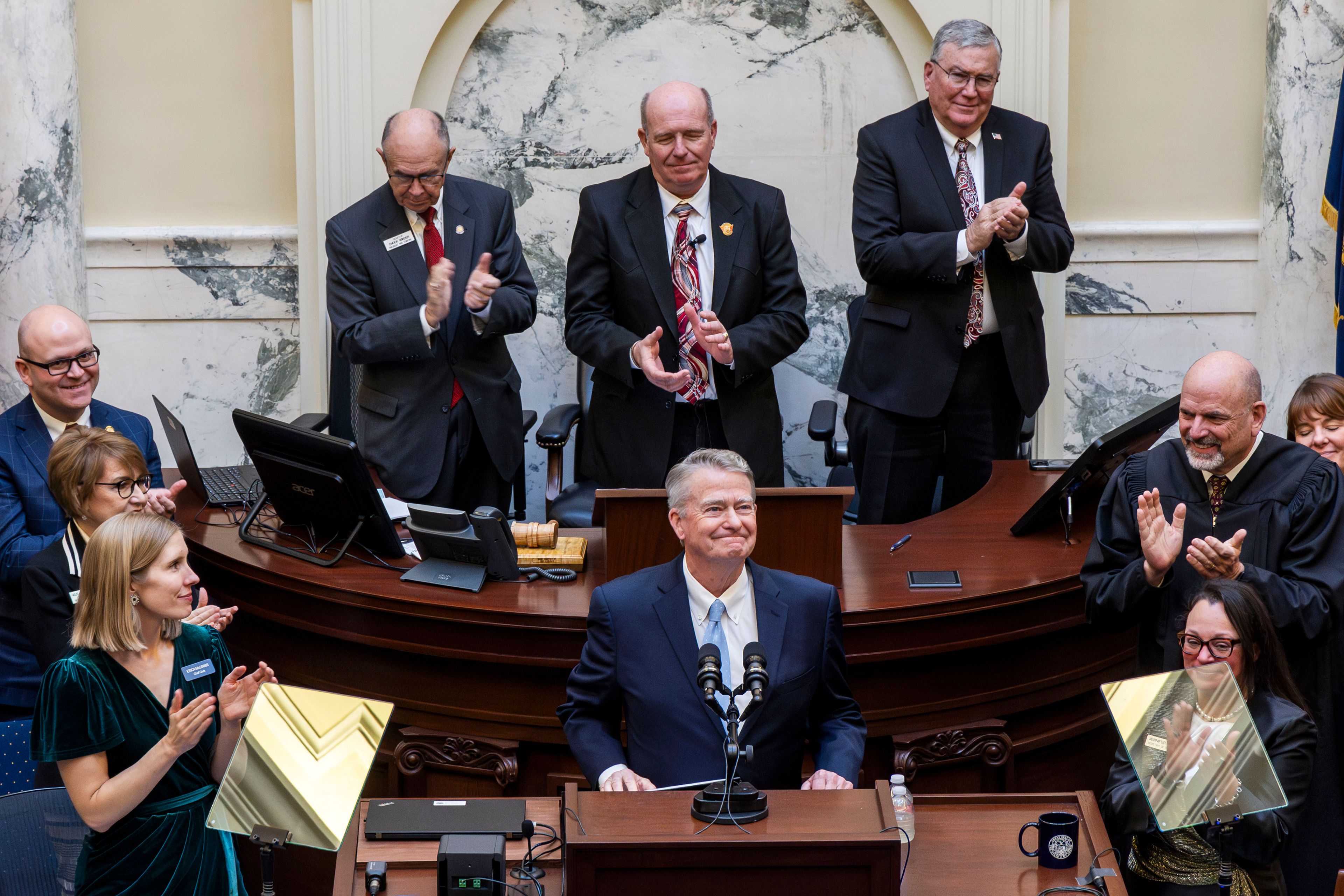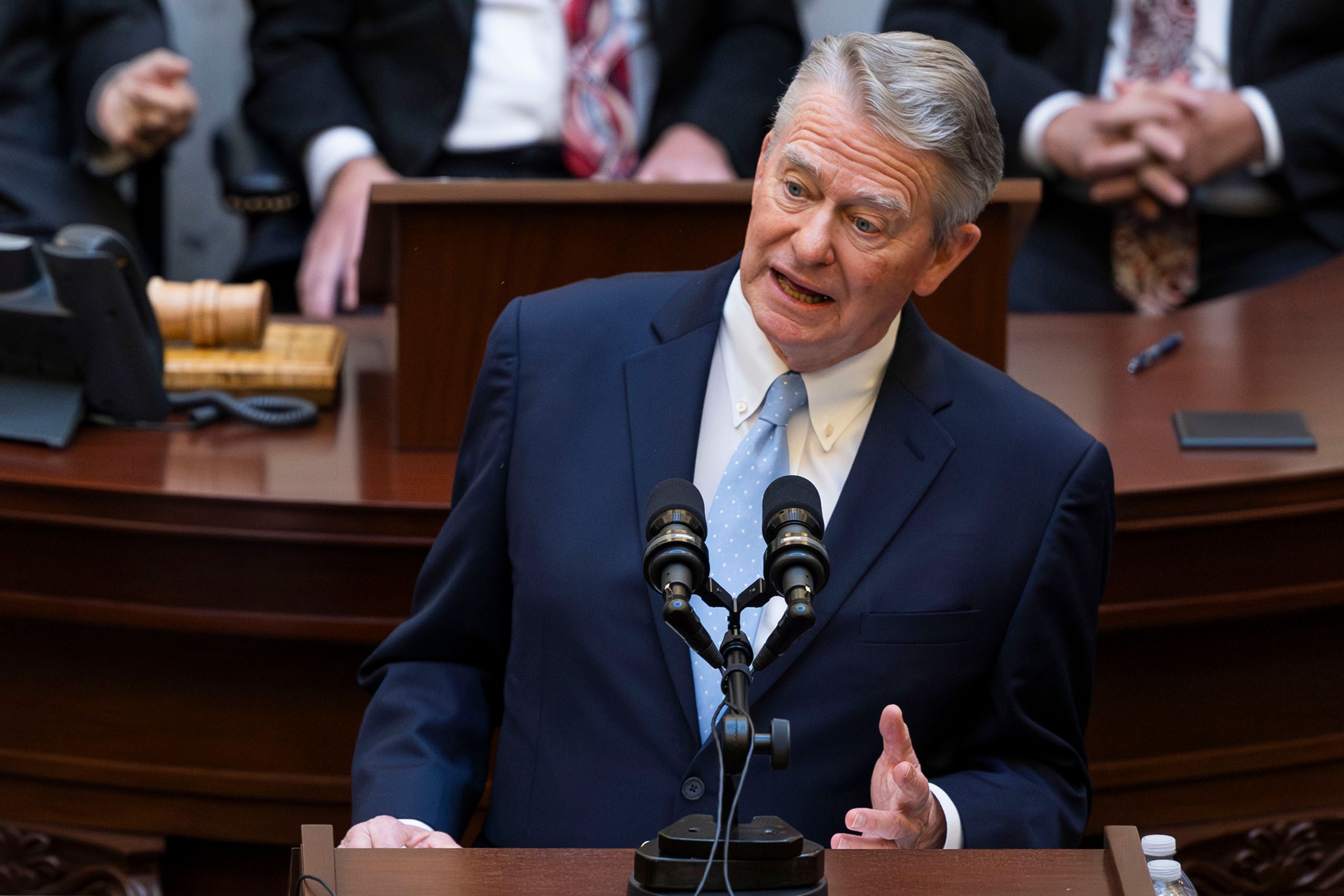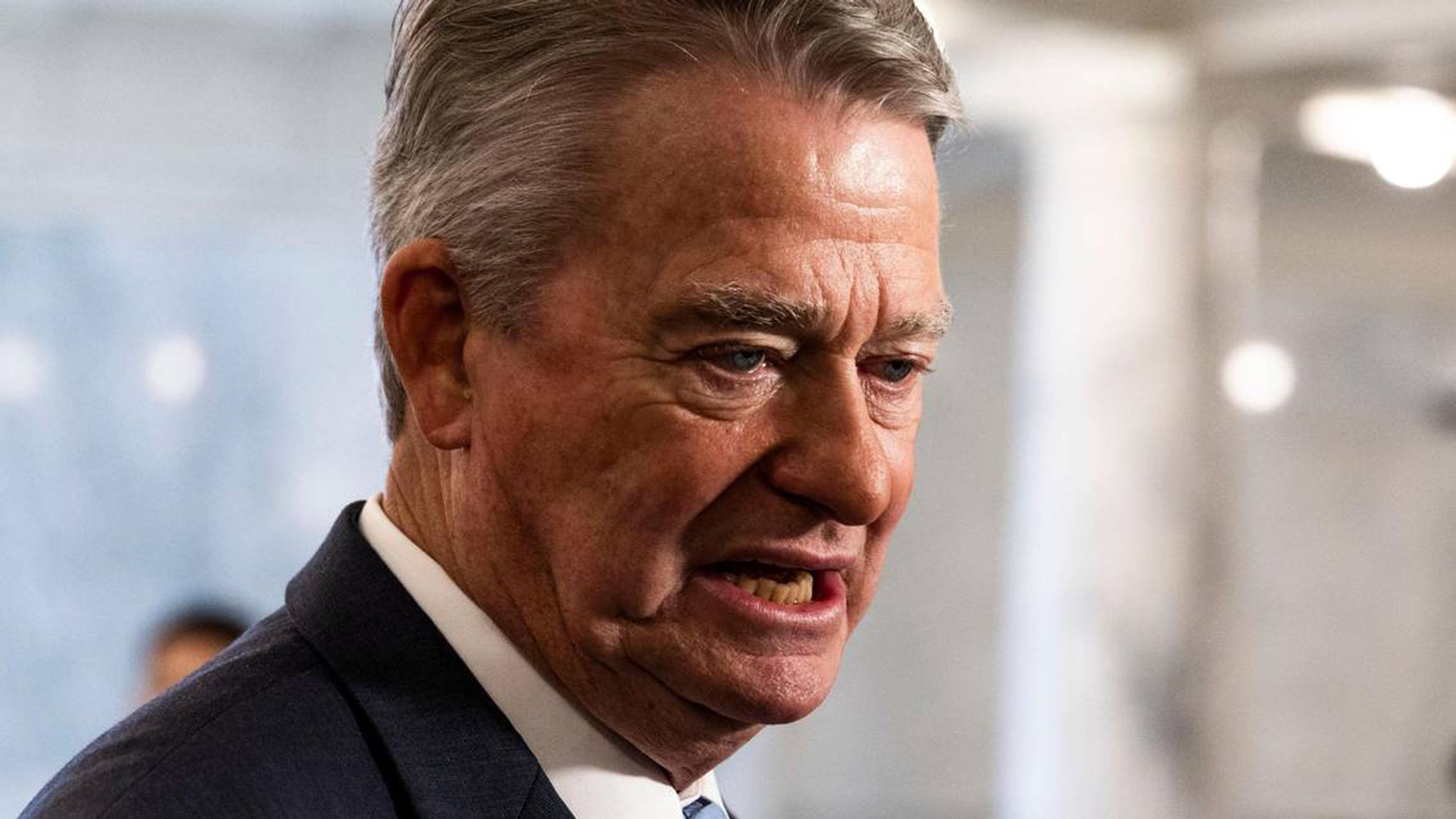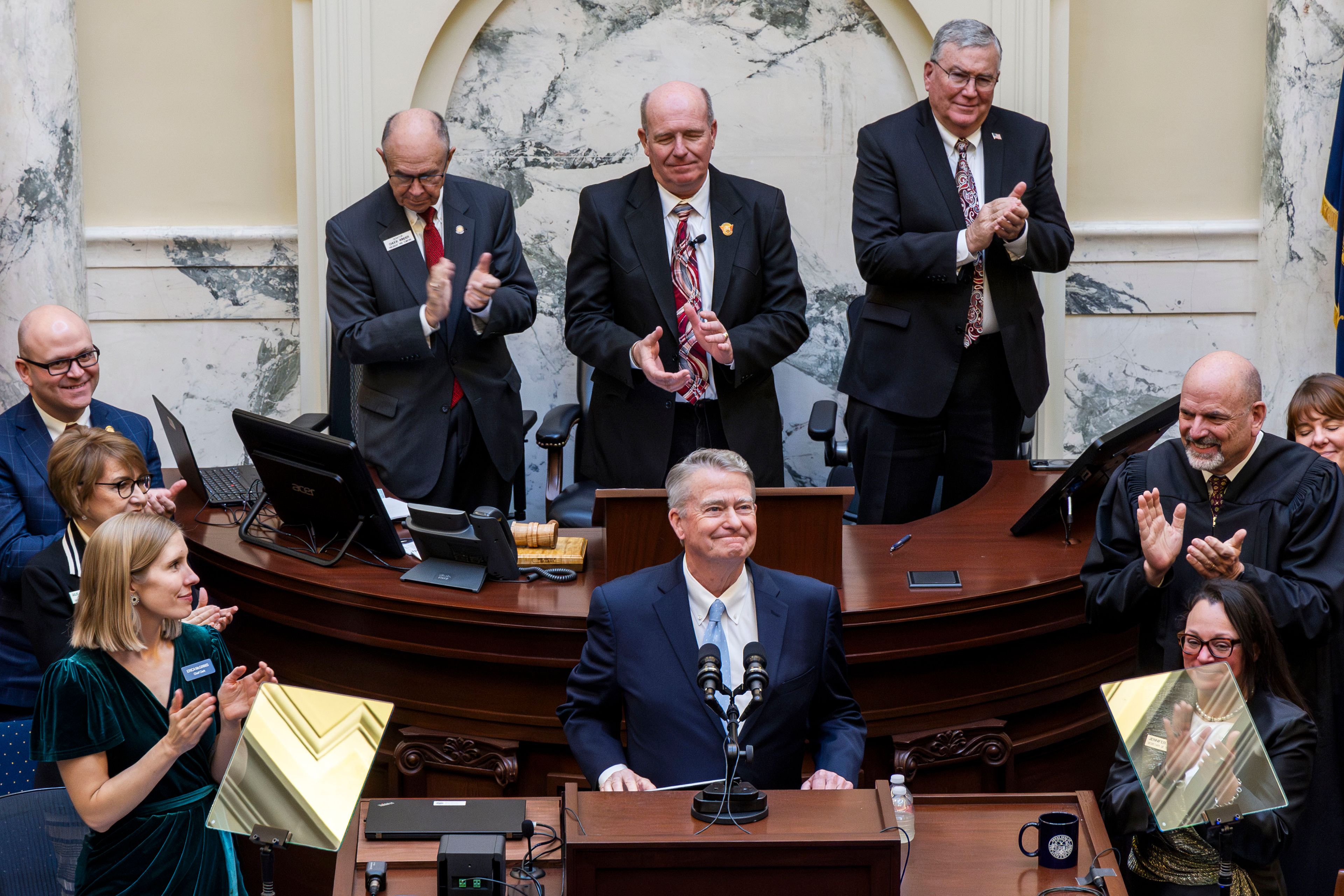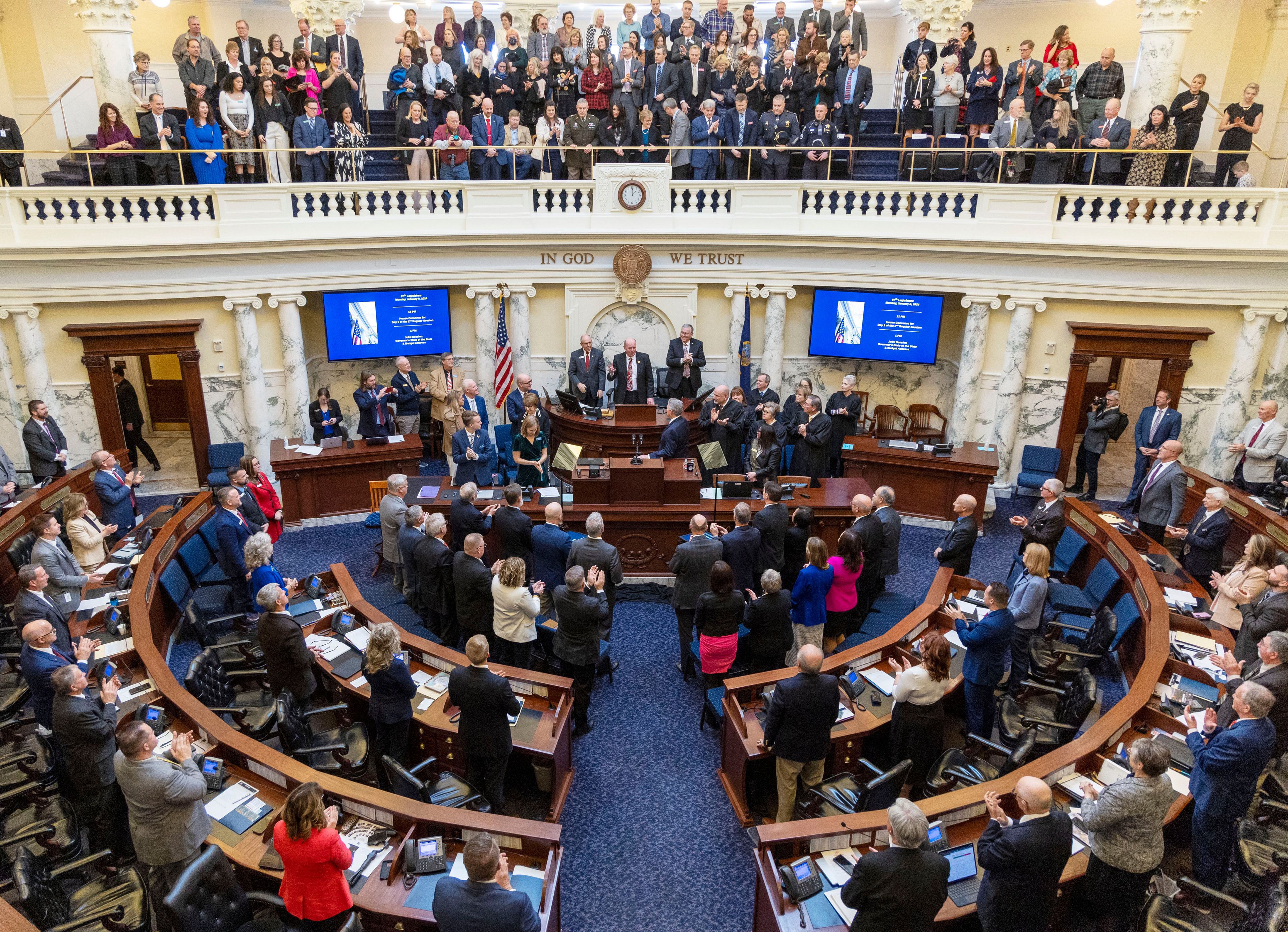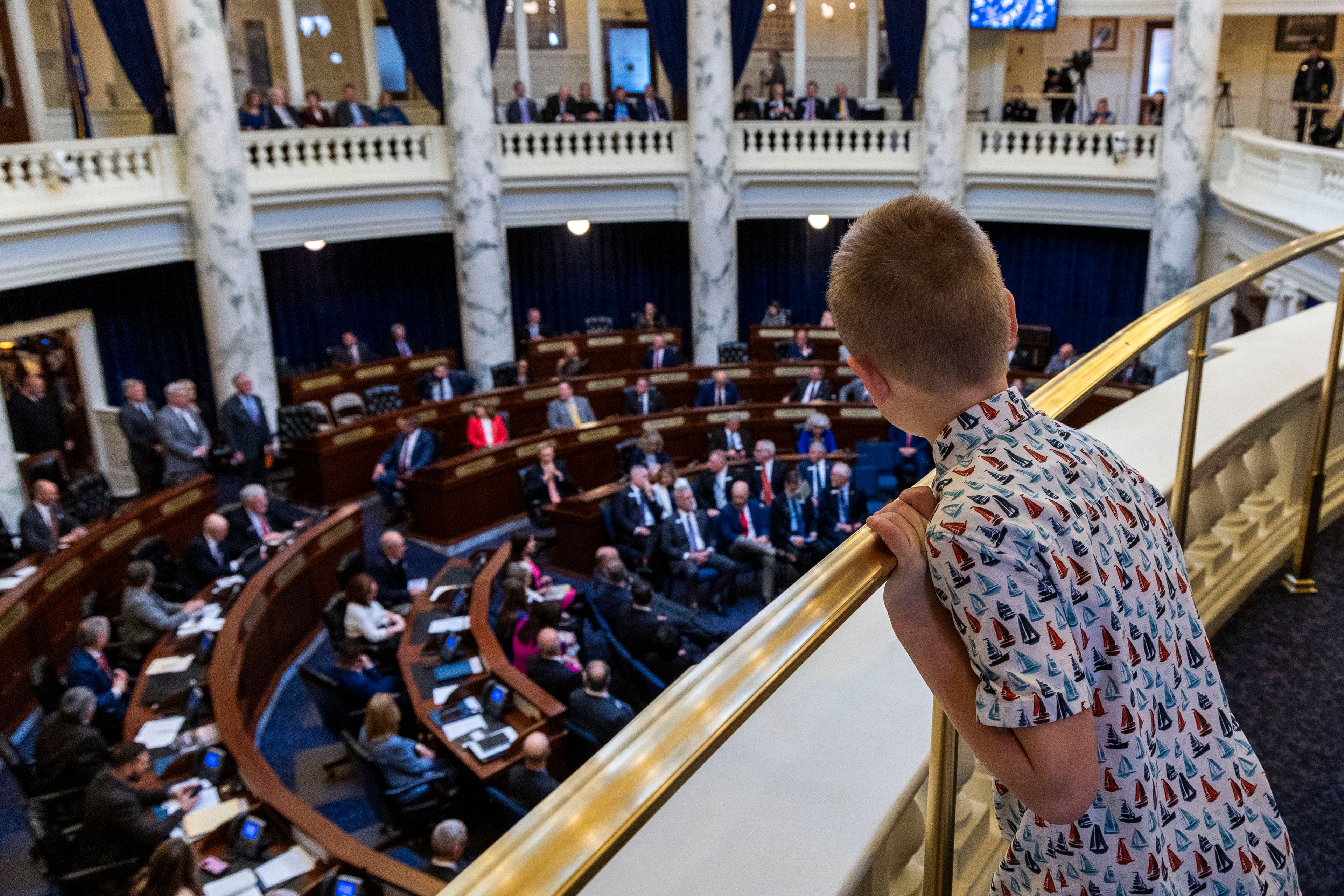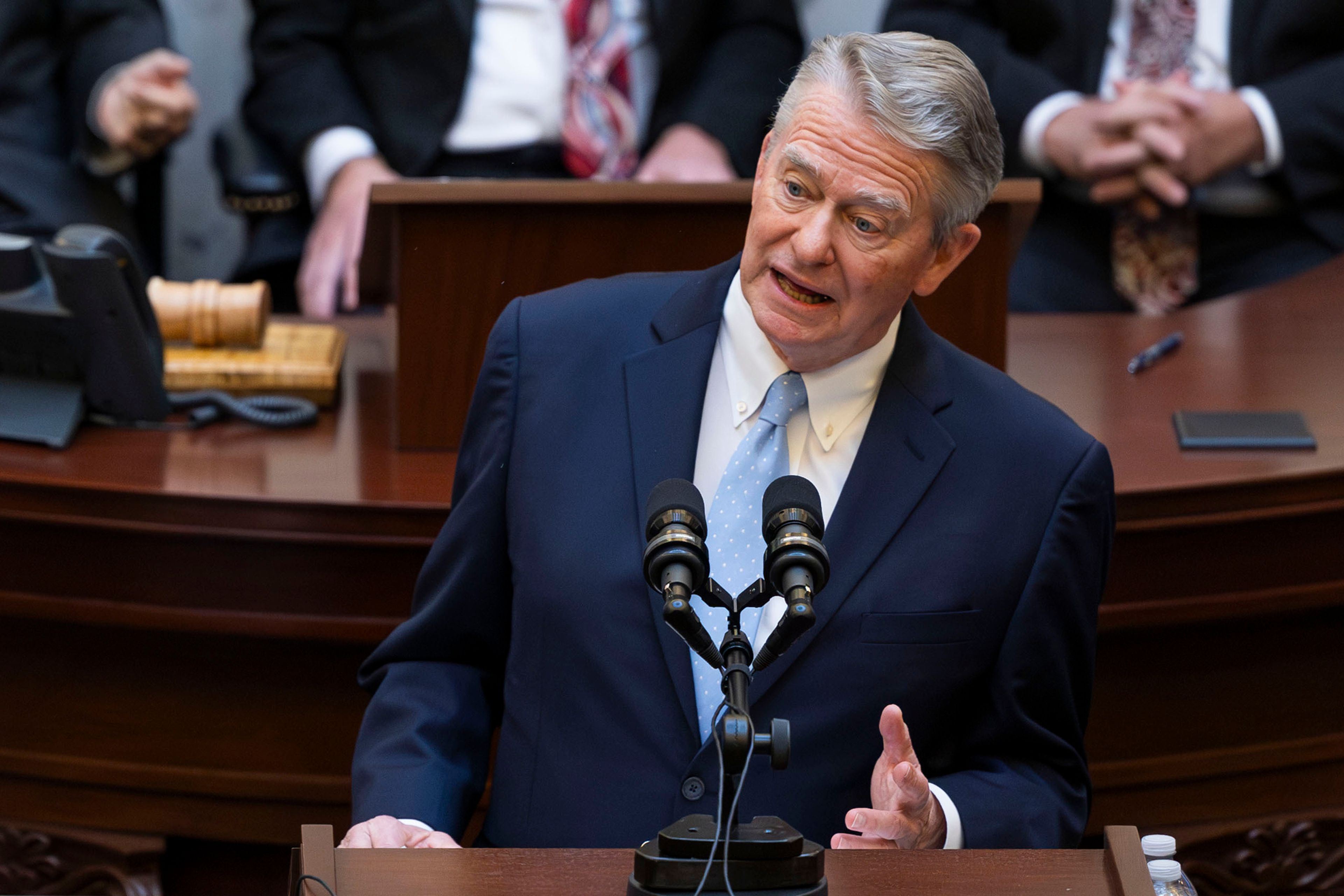Little calls for $200 million annually in school facility funding
Idaho governor cites examples of schools ‘falling apart,’ calls for $200 million for facilities
BOISE — Idaho Gov. Brad Little is calling for a $200 million annual commitment to address school facility maintenance and construction in his 2024 proposed budget.
“We’ve all seen the pictures and videos of some Idaho schools that are neglected — crumbling, leaking, falling apart,” Little said. “In one school I visited, raw sewage is seeping into a space under the cafeteria. Folks, we can do better.”
The governor highlighted many of his budget priorities in his State of the State address Monday, which included proposals for fully funding the Idaho Launch grant program, wildland firefighter bonuses, charter schools, aging bridges, and a mental-health facility for those determined to be dangerously mentally ill.
His proposed budget is built upon the anticipated slowing of state revenues because of less federal funds with the end of the COVID-19 public health emergency and previous tax reductions.
“It became a year of priorities; we couldn’t do it all,” said Alex Adams, the governor’s budget director.
The total proposal is based on estimating about $5.3 billion in general fund revenues, which is a 2.2% growth over last year and the lowest growth year over year since the Great Recession, Adams said.
Little is calling for a limitation on general fund growth in the Idaho Medicaid budget, while proposing increases in the reimbursement rate for direct care workers to address a shortage in the state. He also wants the state to pursue a work requirement for Medicaid expansion beneficiaries.
Republican legislative leaders said Monday that the governor’s proposed budget actually increases the general fund budget by more than the 2.2% because some of it requires shifting spending from general funds to the dedicated funding pot.
“It’s actually much higher than what he’s requesting,” said Majority Leader Rep. Megan Blanksma, R-Hammett, at a news conference following the governor’s address.
Education
Education continues to be a top priority of Little’s.
Amid increasing calls from many Republicans for added school choice in the form of making public funds available for private school tuition and homeschooling, Little said he’d only support options that do not siphon funds from public education.
“I will continue to support a fair, responsible, transparent and accountable approach to expanding school choice in Idaho — one that does not draw resources away from public schools,” Little said in his speech.
A group of Republicans in the Legislature announced a new proposal last week that would provide a $5,000 tax credit for private school tuition, Idaho EdNews reported. A number of proposals to put money toward private or home schooling were rejected last year.
House Speaker Mike Moyle, R-Star, said he thinks the incentive to pass legislation on this subject is increasing.
“There’s more support to do something there,” Moyle said, “and the support keeps growing.”
Moyle said he and the governor share the goal to support school facilities, but “the devil’s in the details” on how that gets done.
Little’s school facility proposal is to make available $2 billion over the next 10 years for school districts to build new facilities and to renovate old buildings.
Some of this funding would include $125 million for school districts to use to pay bonds and levies, building on the investments made in a property tax bill passed last year.
Adams said it’ll be up to the Legislature to decide how this looks but the proposal is to dedicate sales tax revenue to go toward new bonding by the state; that money would then be available to school districts so they don’t need to go out for bonds and levies from their local taxpayers.
Moyle said he’s concerned that too much of the state’s sales tax revenue is put “on autopilot.”
“It makes the budget look level,” he said. “It’s a budget gimmick, but it’s not good for the state of Idaho.”
Last year, the Legislature approved a property tax bill that dedicated some sales tax revenue and online sales tax revenue toward reducing property tax bills; Moyle was a lead negotiator on this bill.
Senate Minority Leader Melissa Wintrow, D-Boise, said the state had gone through years of “irresponsible revenue reductions” in the form of income tax reductions, which she argued should not have been prioritized over facility funding.
“I’m excited to hear that the governor and others want to prioritize building facilities, but we should have never gotten to this point in the first place,” Wintrow said.
Little’s proposal accepts Superintendent of Public Instruction Debbie Critchfield’s recommendation to provide $40 million for outcome-based funding to schools. This would be directed to schools that meet goals in proficiency and growth in early literacy and math, and the number of high school graduates earning credentials toward working or higher education.
Little again proposed $75 million for Launch, which may be used at Idaho higher education institutions, career technical programs or workforce training programs for “in-demand” careers. In the first year of the program, there were more than 12,500 applications through December.
Launch faced a difficult passage last year, with Republicans split in their support.
Moyle has been opposed to the measure, calling it “another government handout.” Blanksma sponsored the legislation last year and said Monday that, “if it’s implemented property and it’s used properly, there’s a lot of opportunity with Launch.”
Democratic leaders said they are strongly in favor of maintaining Launch.
Because the funds may go to universities and community colleges, Little also proposed $32 million for infrastructure at the schools to increase capacity in preparation for more students in some fields.
Transportation
Little’s budget would add $200 million in a continued effort to improve old bridges in the state; the Legislature has previously put $400 million to this effort.
It would also include $50 million toward the Transportation Expansion and Congestion Mitigation bonding program, known as TECM. The state would be able to bond for an estimated additional $800 million for new infrastructure.
Natural resources
The budget would provide $1 million for wildland firefighter bonuses for the Department of Lands to be able to recruit and retain firefighters. This has been a consistent problem for the department as federal firefighting agencies tend to pay better.
There would also be $17 million for the Fire Suppression Deficiency Fund.
Little is proposing $30 million for water infrastructure, $20 million for the Department of Parks and Recreation, and $6.6 million to continue the state’s response to invasive quagga mussels.
The speech
Little’s speech, which can be viewed on Idaho Public Television’s YouTube page, was around 40 minutes and included a video lauding Little’s accomplishments from his tenure in office.
The pre-recorded video highlighted investments in transportation, water infrastructure, public schools, and Idaho Launch — including testimonies from Idaho seniors who received grants. U.S. Rep. Russ Fulcher spoke about Idaho’s approach to budgeting, and Moyle and Senate Pro Tem Chuck Winder also spoke in the video about the state’s accomplishments.
Little touched on a number of social issues, such as being the first state to ban critical race theory in schools, banning diversity statements in university hiring and signing the bill banning transgender athletes from participating in women’s and girl’s sports.
“... and we will keep up the fight,” Little said of this legislation, which is still being challenged in court and currently is under a temporary injunction from a federal judge.
Little committed to continue his focus on tackling fentanyl, with a focus largely on border crossings with Mexico. He said his initiative Operation Esto Perpetua, which he created to address fentanyl, will be expanded to look into human trafficking.
He called for sending two more teams of Idaho State Police troopers to the U.S. southern border to train and “act as a force multiplier.” Little has sent troopers to the border the past two years to train with law enforcement there.
The governor’s full budget proposal can be found on the Division of Financial Management website. It also includes a recommended 3% merit-based increase for employee compensation, with additional increases for nursing and IT staff.
The Legislature will ultimately set the state’s budget and won’t be able to adjourn the session until that’s done. The target date for Sine Die, which is the last day of the session, is March 22.
Guido covers Idaho politics for the Lewiston Tribune, Moscow-Pullman Daily News and Idaho Press of Nampa. She may be contacted at lguido@idahopress.com and can be found on X @EyeOnBoiseGuido.
